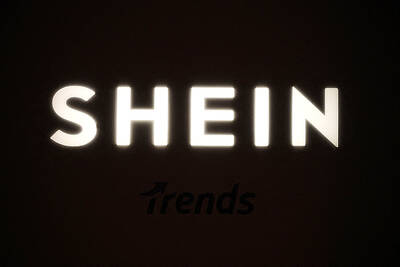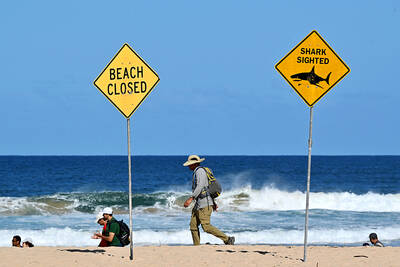Green-friendly fabrics may be expensive, but increasing consumer demand for the environmentally correct is now forcing Asia’s textile giants to go the extra mile to produce clean cloth.
In a sign of the times, at Paris’ twice-yearly Texworld textile trade fair this week, around 60 of the 660 firms exhibiting from around the world flew the green flag, a sharp increase on previous sessions, organizers said.
In China, Bangladesh and India, the world’s top textile producers, as well as in Pakistan, South Korea and Taiwan, natural fibers, organic yarns, fair trade practices and clean processing are creeping into an industry often chided for polluting soils, wasting water and employing child labor.
“We will be starting organic and fair trade by next year,” said Sajedur Rahman Talukder, a marketing manager for Bangladesh’s biggest textile-maker, Norman Group of Industries, whose thousands of workers supply western firms such as Ikea. “It is a market demand.”
South Korean firm Ludia said Eco-friendly fabrics might currently be a niche product around 15 percent more expensive than run-of-the-mill textile, “but in two or three years the consumers will pay the difference.”
“Eco-friendly is our key item, the market has changed,” a company manager said.
This year is being branded UN “International Year of Natural Fibers” to give a shot in the arm to the 40 billion euro (US$52 billion) global annual business in cotton, linen, sisal, hemp, alpaca, jute, wool, angora, cashmere and the like ... much of it grown by small farmers in poor nations.
“Some 30 million tonnes of natural fibres are produced annually,” 25 million of them cotton, the UN Food and Agricultural Organization said last month. “Since the 1960s, the use of synthetic fibers has increased and natural fibers have lost a lot of their market share.”
‘FABRIC OF THE FUTURE’
But 15 years ago, Chinese entrepreneur H.L. Ding (丁洪亮) already had his sights set on homegrown hemp, a 4,000-year-old fiber used in sails for old ships that he describes as the “fabric of the future.”
Strong, resistant, in need of little water or care, and no fertilizers, “it is a very special plant, the strongest of the natural fibers, even better than linen,” he said.
Five years ago, said the head of Hemp Fortex — based in Qingdao with a design studio in Seattle — almost nobody had heard of hemp. Now Nike uses the breathable, anti-bacteria, anti-UV fabric for its shoes.
“We believe organic cotton and hemp will be the main direction in the future,” said Ding, whose turnover has grown from US$400,000 to US$10 million a year selling to Walmart stores and labels such as Banana Republic.
Taiwan’s Chia Her, a 30-year-old textile-maker, said it turned to eco-friendly textiles three years ago “because it was popular in Europe.” Sales of green fabrics since have grown 100-fold.
India’s Vardhman Fabrics, which says it is the country’s top yarn producer, also went green four years ago “because everyone’s asking for eco-friendly to save nature from global warming.”
But going green is no easy business. And the first hurdle is winning the right to tag products as being environmentally correct.
CERTIFICATION
A guide to eco-textile labeling published by the organizers of the Texworld fair lists around 30 eco labels variously issued in Japan, Europe and the US, that all set standards for organic textiles and yarns as well as environmental and fair trade certifications.
“It’s very expensive and very difficult to get the certifications,” said Syed Adeel Haider, deputy marketing manager for Pakistan firm US Denim Mills.
Bringing in consultants, ensuring supplies such as yarns and chemicals met all the right standards and re-adapting the manufacturing process called for sizeable investment, he said.
“We don’t want to harm the environment, the soil or the crops, which are a livelihood for our people,” he said. “So being green-friendly is a social attitude, but it’s also business. Organic materials are in high demand and stores such as Marks and Spencers for example won’t buy anything unless we’re clean from the environmental point of view.”
Two years ago, he said, when the firm began offering green-friendly products, there was no interest.
“Now we have enquiries every day,” he said.
Even in China, world textile leader with a workforce of 20 million and turnover last year of 400 billion euros, green fabrics are gaining a toehold.
“China is receiving increasing orders for eco-friendly textiles, with European customers handing you a thick book like a dictionary with standards and certifications, from the raw material to the finished product,” said Yan York, the Chinese representative for Texworld.

With much pomp and circumstance, Cairo is today to inaugurate the long-awaited Grand Egyptian Museum (GEM), widely presented as the crowning jewel on authorities’ efforts to overhaul the country’s vital tourism industry. With a panoramic view of the Giza pyramids plateau, the museum houses thousands of artifacts spanning more than 5,000 years of Egyptian antiquity at a whopping cost of more than US$1 billion. More than two decades in the making, the ultra-modern museum anticipates 5 million visitors annually, with never-before-seen relics on display. In the run-up to the grand opening, Egyptian media and official statements have hailed the “historic moment,” describing the

SECRETIVE SECT: Tetsuya Yamagami was said to have held a grudge against the Unification Church for bankrupting his family after his mother donated about ¥100m The gunman accused of killing former Japanese prime minister Shinzo Abe yesterday pleaded guilty, three years after the assassination in broad daylight shocked the world. The slaying forced a reckoning in a nation with little experience of gun violence, and ignited scrutiny of alleged ties between prominent conservative lawmakers and a secretive sect, the Unification Church. “Everything is true,” Tetsuya Yamagami said at a court in the western city of Nara, admitting to murdering the nation’s longest-serving leader in July 2022. The 45-year-old was led into the room by four security officials. When the judge asked him to state his name, Yamagami, who

‘CHILD PORNOGRAPHY’: The doll on Shein’s Web site measure about 80cm in height, and it was holding a teddy bear in a photo published by a daily newspaper France’s anti-fraud unit on Saturday said it had reported Asian e-commerce giant Shein (希音) for selling what it described as “sex dolls with a childlike appearance.” The French Directorate General for Competition, Consumer Affairs and Fraud Control (DGCCRF) said in a statement that the “description and categorization” of the items on Shein’s Web site “make it difficult to doubt the child pornography nature of the content.” Shortly after the statement, Shein announced that the dolls in question had been withdrawn from its platform and that it had launched an internal inquiry. On its Web site, Le Parisien daily published a

DEADLY PREDATORS: In New South Wales, smart drumlines — anchored buoys with baited hooks — send an alert when a shark bites, allowing the sharks to be tagged High above Sydney’s beaches, drones seek one of the world’s deadliest predators, scanning for the flick of a tail, the swish of a fin or a shadow slipping through the swell. Australia’s oceans are teeming with sharks, with great whites topping the list of species that might fatally chomp a human. Undeterred, Australians flock to the sea in huge numbers — with a survey last year showing that nearly two-thirds of the population made a total of 650 million coastal visits in a single year. Many beach lovers accept the risks. When a shark killed surfer Mercury Psillakis off a northern Sydney beach last